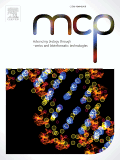![]()
“A key feature of osteoarthritis and rheumatoid arthritis is the loss of articular cartilage.
Cartilage breakdown is mediated by complex interactions of proinflammatory cytokines, such as IL-1, inflammatory mediators, including nitric oxide and prostaglandin E(2), and proteases, including matrix metalloproteinases and aggrecanases, such as ADAMTS-4 and -5.
Cannabinoids have been shown to reduce joint damage in animal models of arthritis.
They have also been shown to prevent IL-1-induced matrix breakdown of collagen and proteoglycan, indicating that cannabinoids may mediate chondroprotective effects.
Cannabinoids produce their effects via several cannabinoid receptors and it is important to identify the key cannabinoids and their receptors that are involved in chondroprotection.
This review aims to outline the current and future prospects of cannabinoids as anti-arthritic therapeutics, in terms of their ability to prevent cartilage breakdown.”









